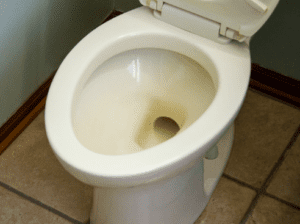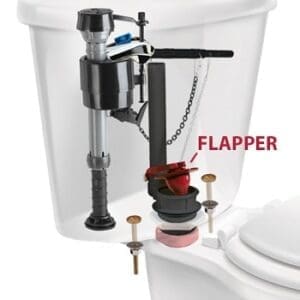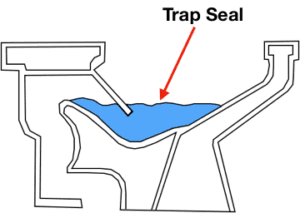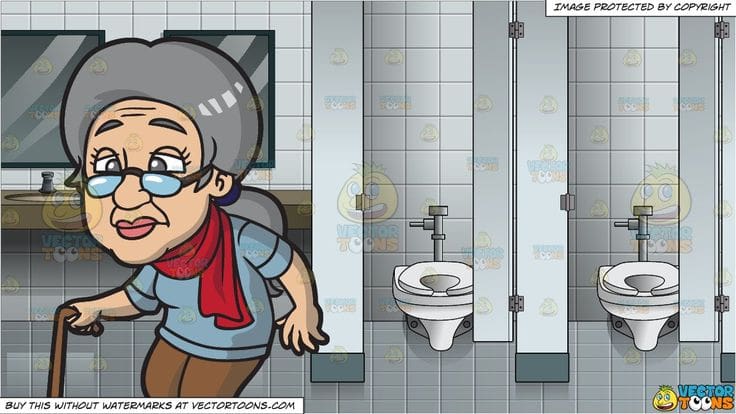5 Reasons Why To Consider an Upgrade
Today, we are going to discuss a topic that might not be the most glamorous, but is certainly essential when it comes to the functionality and comfort of your home – knowing when it’s time for a new toilet. While it may not be a subject that is frequently discussed, the importance of a properly functioning toilet cannot be underestimated. A well-maintained and efficient toilet not only ensures a hygienic environment but also contributes to water conservation and lowers utility bills.
In this blog post, we will explore the signs that indicate it’s time to bid farewell to your old toilet and invest in a new one. So, if you’re experiencing any issues with your current toilet or simply want to stay informed about home maintenance, keep reading to discover the telltale signs that it’s time for a new toilet.
1. It’s Old
If your toilet is old, it might be time for an upgrade. While repairs might still work on the current unit, a modern model will likely be more efficient and save on water bills while providing added comfort and cleanliness compared to what might have existed decades ago.
When your toilet requires multiple flushes to operate effectively, this could be an indicator that its internal parts need replacing. While this may be easily resolved with occasional adjustments to your tank contents, if this problem becomes persistently bothersome then perhaps its time for an upgrade or new purchase of toilet.
Your commode may be nearing its lifespan if it frequently clogs and leaks, which is an inconvenience, while leakage poses risks to both floors and homes.
If your toilet is leaking, the first step should be to turn off its water source to avoid an accidental flood of water. Next, call in a professional plumber; this may require either quick repairs of broken flanges and seals or new purchases due to hairline cracks that consistently cause leakage.
2. It’s Leaking
If your toilet keeps leaving puddles of water on the bathroom floor, it could be time for an upgrade to one more water-efficient. Persistent leakage could indicate loose or damaged fill valves, broken flange seals or hairline cracks – and an inspection with dye test can quickly identify potential sources.
Leakage within your tank typically signals a fill valve or float issue that can be resolved easily with just an adjustment. Leaks from an overflow tube or siphon jet hole could indicate a blocked drain line or outdated flush kit components that need to be updated or replaced, among other possible causes.
If the leak stems from porcelain itself, it’s probably time for an upgrade: porcelain leaks often signal cracking and leaky bowls that must be addressed ASAP; leaving cracked toilets alone could lead to further deterioration, water damage to adjacent flooring and walls and mildew build-up – potentially leaving homeowners exposed to even greater risks than before.
Another key factor is how often your toilet requires repairs. If it requires frequent repairs, calling in plumbers every other week, upgrading to more durable and long-lasting models could save money and make life more comfortable in your home.
3. It’s Clogged
If you find that each time you use the toilet requires you to keep a plunger handy and hope for the best, it may be time to consider replacing it. Clogged toilets can lead to unattractive and hazardous floor damage as well as being an inconvenience for you and your family.
Clogged toilets typically indicate something foreign has made its way into the drain system. This could range from using too much toilet paper (Americans use twice what is accepted in Europe) or more serious issues like sewer line clogs that prevent waste from leaving your home and entering municipal sewage systems. Recurring issues should be dealt with professionally if they persist – regularly plunging the toilet is one of many indications.
Your toilet may also experience internal tank issues, including a stuck float in need of adjustment or an overly-deep refill tube insertion into the overflow tube. In such instances, new fill valve and float assemblies might be required.
Hard water is notorious for clogging toilets as it accumulates in pipes, narrowing their passageway for waste and water to flow freely. A professional can install a water softener in your home to help alleviate further problems in the future.
4. It’s Wobbly
Unstable toilets can be uncomfortable and potentially costly to repair, leading to expensive flooring damage. If yours frequently needs repair work done due to wobbly parts, perhaps now would be a good time for an upgrade?
When a toilet wobbles, often its bolts that secure it to the floor have come loose over time. Tightening them may temporarily resolve this issue; however, eventually their tightening may loosen again and the toilet may begin rocking back and forth again, eventually leading to cracked flanges or subfloor damage that requires extensive repairs as well as the installation of new plumbing fixtures and possibly even another toilet.
A great way to identify the cause of toilet wobbling is to turn off both water sources and flush, then sponge out both tank and base of all excess water. Remove cap covers and nuts from both sets of bolts on either side of the tank; lift tank straight up over them, remove wax ring, inspect for damages/rot or replace entirely as necessary with new one from kit or replacement service provider.
Alternatively, if the toilet flange is undamaged and its elevation has become an issue, shims can be used to address it. As this task requires precise measurement, it may be best left up to professionals if this task feels daunting to you.
5. It’s a Pain to Clean
If your weekends are spent scrubbing and cleaning your toilet, it may be time for an upgrade. Even the best toilets can become difficult to keep clean due to hard water mineral deposits that build up inside their siphon tube and inlet holes; these deposits often cannot be reversed and lead to less powerful flushes as well as more clogs than before; to address these irreversible deposits effectively it would be wiser to install a new model with an enhanced flush system.
In Conclusion
These 5 reasons scratch the surface on why you may need to replace your toilet. Here is an overview checklist you can take in to consideration as well:
Frequent leaks: If your toilet is constantly leaking, despite attempts to fix it, it may be a sign of worn-out components or cracks in the porcelain. Constant leaks can waste water and lead to higher utility bills.
Cracks or damage: Check the toilet bowl, tank, and base for any visible cracks or damage. Cracks can lead to leaks and structural issues, compromising the toilet’s functionality.
Repairs are becoming more frequent: If you find yourself frequently repairing various parts of the toilet, such as the flush mechanism or handle, it may be more cost-effective to invest in a new toilet.
Constant clogs: If your toilet is prone to frequent clogging and plunging doesn’t resolve the issue, it could indicate a problem with the toilet’s design or a worn-out flushing system.
Poor flushing performance: If the toilet consistently struggles to flush waste effectively, it may not be providing the necessary water pressure or the internal mechanisms may be worn out.
High water usage: Older toilets can use significantly more water per flush compared to newer models, leading to higher water bills. Upgrading to a newer, more water-efficient toilet can help save water and money in the long run.
Outdated design and efficiency: If your toilet is quite old, it may lack modern features like dual-flush options or water-saving technology, which are common in newer toilets.
Difficulties finding replacement parts: As toilets age, finding compatible replacement parts can become challenging and expensive.
Stains and discoloration: Stubborn stains in the bowl or frequent discoloration despite regular cleaning may indicate that the toilet’s surface has deteriorated over time.
Unpleasant odors: If you notice persistent foul odors despite regular cleaning, it could indicate cracks or improper sealing, allowing sewer gasses to escape.
Aesthetics and home improvement: If you’re renovating or updating your bathroom and the current toilet no longer matches the desired aesthetics, it might be a good time to replace it.
When considering a new toilet, look for modern, water-efficient models that carry the WaterSense label, indicating they meet water-saving standards set by the U.S. Environmental Protection Agency (EPA). Investing in a new toilet that meets current efficiency standards can help you save water and money in the long run.
Time To Call a Professional? Discount Plumbers Is Here!
Toilet repair can be… well a pain in the neck. Toilets are bulky and heavy, can break easily and hard to install properly. With Discount Plumbers, you can trust that your toilet will be in capable hands. Our expertise and attention to detail guarantee a high-quality result that meets your expectations. Whether you are in need of a simple repair or a complete installation, Discount Plumbers has the knowledge and skills to get the job done right the first time.
Located in Minneapolis, Minnesota, we’re a reputable plumbing company that excels in toilet repair and installation services. We provide ‘plumbers near me’ services in 65 surrounding metro cities. Don’t hesitate to contact Discount Plumbers for all your toilet repair or installation needs, and experience our exceptional service for yourself. We’re ready to service you today.












